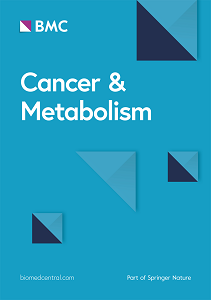Characterizing OXPHOS inhibitor-mediated alleviation of hypoxia using high-throughput live cell-imaging
IF 5.3
3区 医学
Q1 CELL BIOLOGY
引用次数: 0
Abstract
Hypoxia is a common feature of many solid tumors and causes radiotherapy and immunotherapy resistance. Pharmacological inhibition of oxidative phosphorylation (OXPHOS) has emerged as a therapeutic strategy to reduce hypoxia. However, the OXPHOS inhibitors tested in clinical trials caused only moderate responses in hypoxia alleviation or trials were terminated due to dose-limiting toxicities. To improve the therapeutic benefit, FDA approved OXPHOS inhibitors (e.g. atovaquone) were conjugated to triphenylphosphonium (TPP+) to preferentially target cancer cell’s mitochondria. In this study, we evaluated the hypoxia reducing effects of several mitochondria-targeted OXPHOS inhibitors and compared them to non-mitochondria-targeted OXPHOS inhibitors using newly developed spheroid models for diffusion-limited hypoxia. B16OVA murine melanoma cells and MC38 murine colon cancer cells expressing a HIF-Responsive Element (HRE)-induced Green Fluorescent Protein (GFP) with an oxygen-dependent degradation domain (HRE-eGFP-ODD) were generated to assess diffusion-limited hypoxia dynamics in spheroids. Spheroids were treated with IACS-010759, atovaquone, metformin, tamoxifen or with mitochondria-targeted atovaquone (Mito-ATO), PEGylated mitochondria-targeted atovaquone (Mito-PEG-ATO) or mitochondria-targeted tamoxifen (MitoTam). Hypoxia dynamics were followed and quantified over time using the IncuCyte Zoom Live Cell-Imaging system. Hypoxic cores developed in B16OVA.HRE and MC38.HRE spheroids within 24 h hours after seeding. Treatment with IACS-010759, metformin, atovaquone, Mito-PEG-ATO and MitoTam showed a dose-dependent reduction of hypoxia in both B16OVA.HRE and MC38.HRE spheroids. Mito-ATO only alleviated hypoxia in MC38.HRE spheroids while tamoxifen was not able to reduce hypoxia in any of the spheroid models. The mitochondria-targeted OXPHOS inhibitors demonstrated stronger anti-hypoxic effects compared to the non-mito-targeted OXPHOS inhibitors. We successfully developed a high-throughput spheroid model in which hypoxia dynamics can be quantified over time. Using this model, we showed that the mitochondria-targeted OXPHOS inhibitors Mito-ATO, Mito-PEG-ATO and MitoTam reduce hypoxia in tumor cells in a dose-dependent manner, potentially sensitizing hypoxic tumor cells for radiotherapy.利用高通量活细胞成像鉴定 OXPHOS 抑制剂介导的缺氧缓解作用
缺氧是许多实体瘤的共同特征,并导致放疗和免疫疗法的耐药性。药物抑制氧化磷酸化(OXPHOS)已成为减少缺氧的一种治疗策略。然而,在临床试验中测试的 OXPHOS 抑制剂在缓解缺氧方面只产生了中等程度的反应,或因剂量限制性毒性反应而终止试验。为了提高治疗效果,FDA 批准的 OXPHOS 抑制剂(如阿托伐醌)与三苯基膦(TPP+)结合,优先靶向癌细胞线粒体。在本研究中,我们利用新开发的扩散受限缺氧球体模型,评估了几种线粒体靶向 OXPHOS 抑制剂的减低缺氧效果,并与非线粒体靶向 OXPHOS 抑制剂进行了比较。研究人员生成了 B16OVA 小鼠黑色素瘤细胞和 MC38 小鼠结肠癌细胞,这些细胞表达 HIF 反应元件(HRE)诱导的具有氧依赖性降解结构域(HRE-eGFP-ODD)的绿色荧光蛋白(GFP),用于评估球体内扩散受限的缺氧动态。用IACS-010759、阿托伐醌、二甲双胍、他莫昔芬或线粒体靶向阿托伐醌(Mito-ATO)、PEG化线粒体靶向阿托伐醌(Mito-PEG-ATO)或线粒体靶向他莫昔芬(MitoTam)处理球形体。使用 IncuCyte Zoom 活细胞成像系统对缺氧动态进行跟踪和量化。B16OVA.HRE和MC38.HRE球形体在播种后24小时内形成缺氧核心。用IACS-010759、二甲双胍、阿托伐醌、Mito-PEG-ATO和MitoTam处理后,B16OVA.HRE和MC38.HRE球形细胞的缺氧程度呈剂量依赖性降低。米托-ATO仅缓解了MC38.HRE球体的缺氧,而他莫昔芬则无法缓解任何球体模型的缺氧。与非靶向 OXPHOS 抑制剂相比,靶向线粒体的 OXPHOS 抑制剂具有更强的抗缺氧作用。我们成功开发了一种高通量球状模型,该模型可以量化缺氧随时间变化的动态变化。利用该模型,我们发现线粒体靶向 OXPHOS 抑制剂 Mito-ATO、Mito-PEG-ATO 和 MitoTam 能以剂量依赖的方式降低肿瘤细胞的缺氧程度,从而可能使缺氧的肿瘤细胞对放疗敏感。
本文章由计算机程序翻译,如有差异,请以英文原文为准。
求助全文
约1分钟内获得全文
求助全文
来源期刊

Cancer & Metabolism
Multiple-
自引率
1.70%
发文量
17
审稿时长
14 weeks
期刊介绍:
Cancer & Metabolism welcomes studies on all aspects of the relationship between cancer and metabolism, including: -Molecular biology and genetics of cancer metabolism -Whole-body metabolism, including diabetes and obesity, in relation to cancer -Metabolomics in relation to cancer; -Metabolism-based imaging -Preclinical and clinical studies of metabolism-related cancer therapies.
 求助内容:
求助内容: 应助结果提醒方式:
应助结果提醒方式:


